“Talking about our product right off the bat in our content will make us sound too sales-y.”
Sounds familiar?
Do you publish product-led content for your SaaS blog? Like many SaaS marketers, you’ve probably been wired to focus on customers’ interests and pain points first. Then gently nudge them to learn more about the product if they seem interested.
You’ve probably been advised to focus on creating TOFU content, building pillar pages, getting backlinks, and promoting it like your life depends on it.
Because promotion>creation, right?
Now, I’m not saying there’s something wrong with this. But you need to step back and ask yourself – in all of this, does your product ever take centre stage?
As a SaaS company, when your product is the hero of your business and has the ability to solve the customers’ pain points, it is only fair to make it the hero of your content too.
What is Product Led Content?
Product-led content is created around your product as the centre, targeting a specific pain point of your audience and showing how the product can solve it. The product becomes the hero, fighting off your audience’s biggest challenges and smallest pains.
With product-led content, however, there’s always the risk of coming off as pushy if there is no customer-centric strategy to back it. And you might end up asking yourself-
- At what point in my content is it a good idea to focus on the product?
- What language and tonality will fit?
- Will it come across as a sales commercial or a hard sell?
But product-led content is not a hard sales pitch. When done right, it weaves the product and its use cases into the narrative naturally. This helps readers visualise the solution while discovering you’ve got the right product for them.
It doesn’t push for a sale. It doesn’t tell the readers how “amazing” is your product but simply demonstrates it. This leaves a deeper impact on the reader and creates a higher recall for your product.
Additional Read: 8 Types of Content That Can Help You Ace Product-Led Content Marketing
Why are More and More SaaS Companies Choosing to Be Product-Led?
Pick up any successful SaaS company in the last decade. Most, if not all, have a product-focused content strategy. HubSpot, Notion, Slack, Calendly, Basecamp, and more have seen tremendous success with content.
Here’s what Kieran Flanagan, VP of Marketing HubSpot, has to say about product-led growth.
Leading with the product works well because of many reasons.
- Product experiences are taking centre stage in the customer’s buying journey. They want to try it before they buy it.
- At least three out of every four buyers prefer to self-educate. That means you, as the provider, need to churn out educational content beyond user guides.
- It makes it easier to communicate the product value to the customer. This is because of the underlying “show, don’t tell” principle.
Product-led content complements your SEO marketing and generates qualified traffic that carries a higher conversion rate. This is why SaaS companies with a product-led growth strategy have a 25% higher growth rate than other public SaaS companies.
So, the growing popularity of product-led content among SaaS companies makes sense.
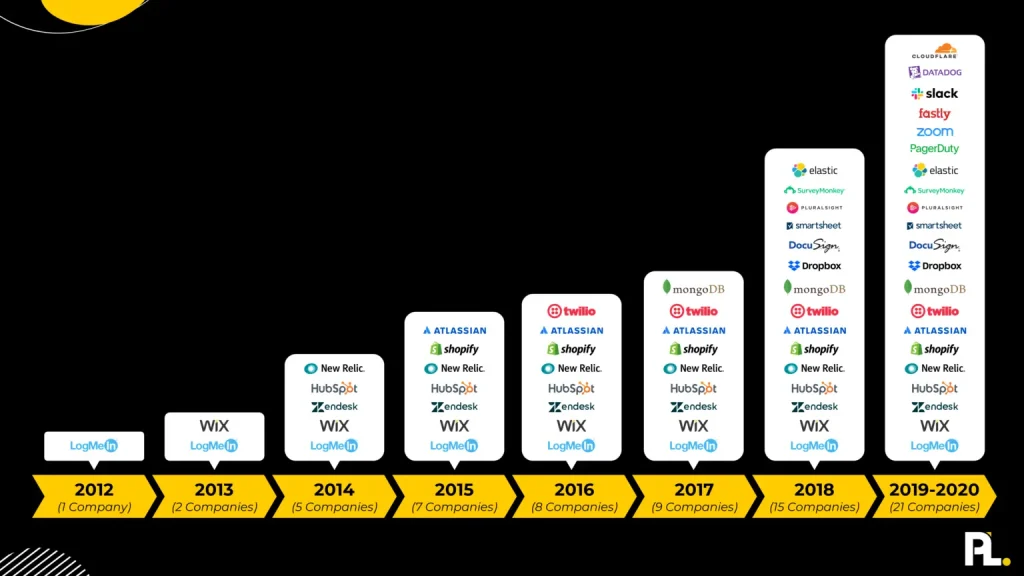
Why You Should Focus on Product-Led Content
#1 Attract Better Leads
With product led-content, you can generate qualified traffic, which comprises people already engaged with your product. And this traffic is much easier to convert.
When your audience gets to know your product in a case-by-case manner, they can fully understand its benefits. This is in contrast to demo videos and eBooks used in traditional marketing, which only highlight the features and how to use them.
With product-driven content, you have a better chance of generating qualified traffic and attracting leads who’re more likely to subscribe.
Since they have seen the product in action, they will see it as a potent solution from the beginning. Your product will be top of mind when they finally come to a product decision.
#2 Create Value for Your Product
Product-led content is value-driven. It helps you demonstrate the value of your product in a tangible way.
In fact, it solves one of the biggest challenges of SaaS marketing – educating the audience about how to use your product.
Just talking about the benefits of your product is not enough. Standard product descriptions can leave customers unconvinced of their value. So, it’s time to show them how.
Since SaaS products involve complex features, product-led content is an easy and accessible way to demonstrate your product’s 360-degree capabilities.
#3 Retain Customers With Product-Led Content
One of the major reasons for high customer churn, particularly for SaaS, is difficulty in using the product.
Even when customers buy your product, they will need assistance to use the product to its full capacity. This is where product-led content can help you ensure continuous customer education.
With quality product-led content, you can retain customers by helping them discover the best ways to use the product.
How?
You can build a knowledge centre like Notion’s Customer Stories where they can discover new product features and learn how to use them. Or maybe targeted content recommendations based on the customers’ activity on your website.
Slack, the leading communication platform, is an excellent example of what your customer-retention-focused, product-led content should look like. In this blog, Collaborate with kindness: Consider these etiquette tips in Slack, the company focuses on educating its existing customers, offering them the best practices for the ethical use of the platform.
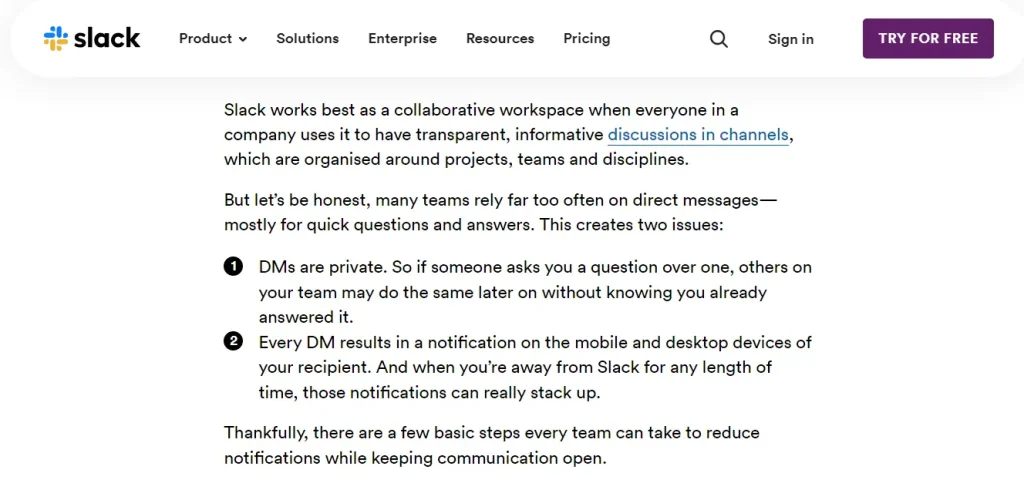
Bonus Read: How Customer Education is Rapidly Changing Success Criteria for Product-Led Companies
#4 Lead to a Free Trial Through Product-Led Content
If a prospect comes across your content while searching for answers to their pain points, they will immediately know how you can solve them. In a matter of minutes, they will have moved from being problem-aware to solution-aware.
They can easily sign up for a free trial to know how it works. Product-led content is, therefore, solution-driven, encouraging higher conversion.
#5 Leave a Lasting Impression on the Audience’s Mind
Think like your audience.
If you come across a paid ad offering content generation ideas for your SaaS marketing strategy, how likely will you remember it?
Instead, if you come across a detailed content piece from a company showing how their product can facilitate content ideation and elevate your strategy, you’re likely to remember their name.
This is what a robust product-led content strategy does for your business. When you flawlessly incorporate your product into a well-written content narrative, you imprint the features and benefits of the product in your readers’ minds.
Here’s what this does: they will stop seeing your product as another option and start seeing it as a potential solution.
How to Create a Product-Led Content Strategy?
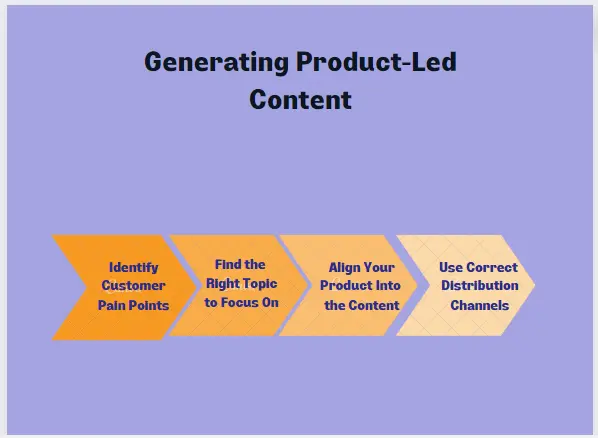
An effective product-led content strategy stands on three pillars:
- Product value
- Customer success
- Content engagement
Here’s a 5-step strategy for your next content marketing campaign.
A. Understand Your SaaS Product
Do you know your SaaS product really well? The best product-led content strategy starts with your ability to understand the features and uses of your product. This means working with the product team to know the product inside out.
This will help you position the product better, highlight its prominent features, and ensure what you’re creating is relevant to the target audience. Shopify, for instance, created a series of case studies highlighting how they used their own platform to start a business and sell products. In fact, they documented every step of the process – from product ideas to market research to advertising and more.
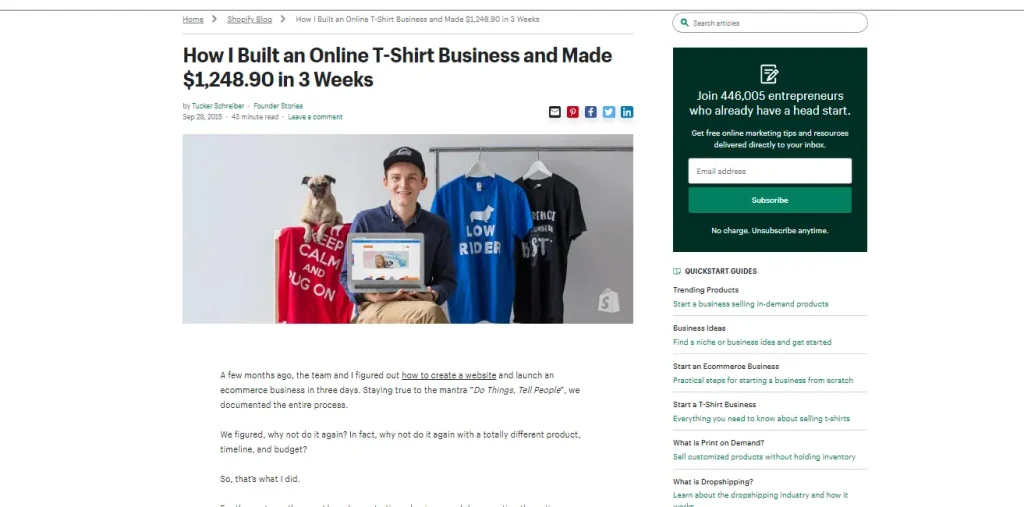
B. Know Customer Challenges and Pain Points
As with any other marketing strategy, your customers’ pain points should be the focus of your product-led strategy. This is where your market research comes into play.
Work with the customer and sales team to identify what concerns your customers. You can attend sales calls or ask for a screen recording. Floating survey forms is another good idea.
Or, if you want to dig deeper, you can solicit the customers only. You can incentivize them with a discount coupon in exchange for their time.
Once you’ve got a good amount to work with, highlight the challenges in your content and offer possible solutions.
C. Target The Right Topics
The content you create has to resonate with your target audience for higher engagement. For this, look for topics matching your customer’s search intent.
Because the ultimate goal is to get high website traffic and rank high on Google, the topics you choose should have a higher search potential. A good way to look for suitable topics is to use Google Trends.
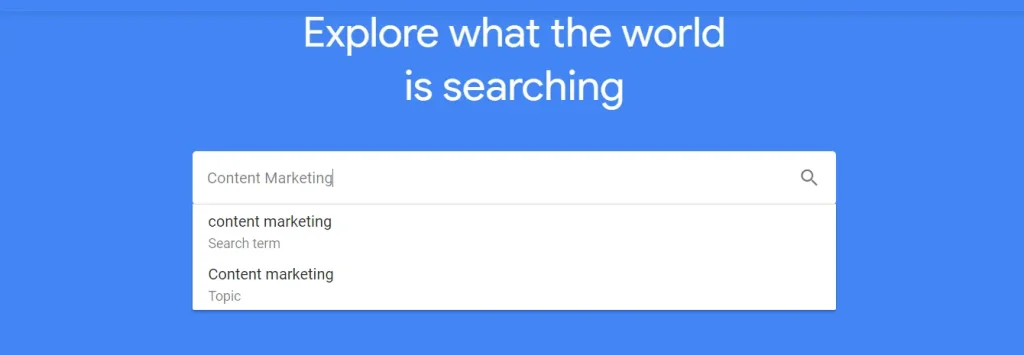
Here, you can find trending topics around your niche and filter the results according to specific regions, categories, time periods, and types of searches. Or you could explore the ‘related queries’ section for more ideas.
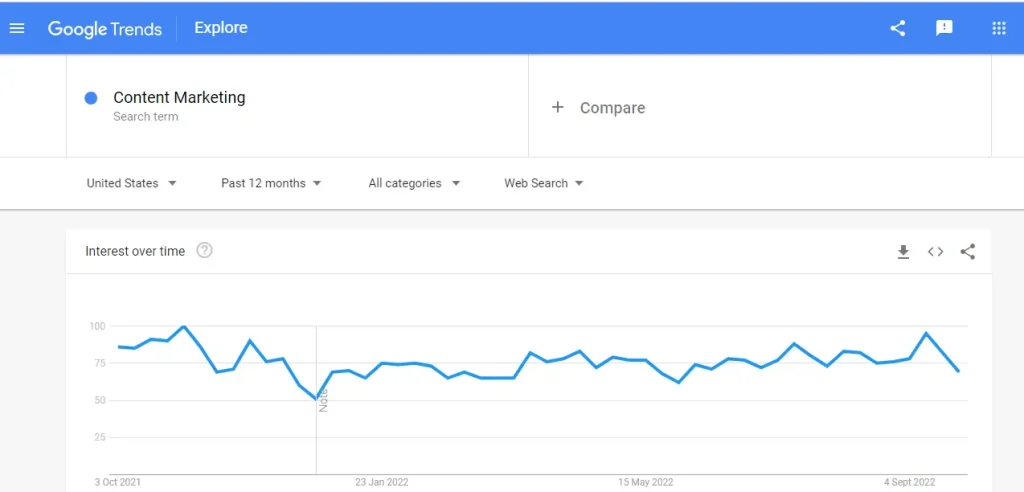
Once you have recognized potential topics, you can use Google Keywords Planner to find the search volume and come up with a list based on traffic potential.
Since content ideation and keyword research can be extremely challenging (trust me, we know!), here are some other tools that can make it easier.
Also Read: How to Never Run Out of Content Ideas for Your SaaS Blog
D. Strategically Position Your Product
Take a look at this HubSpot blog post, ‘How to Track and Close More Deals in a CRM’
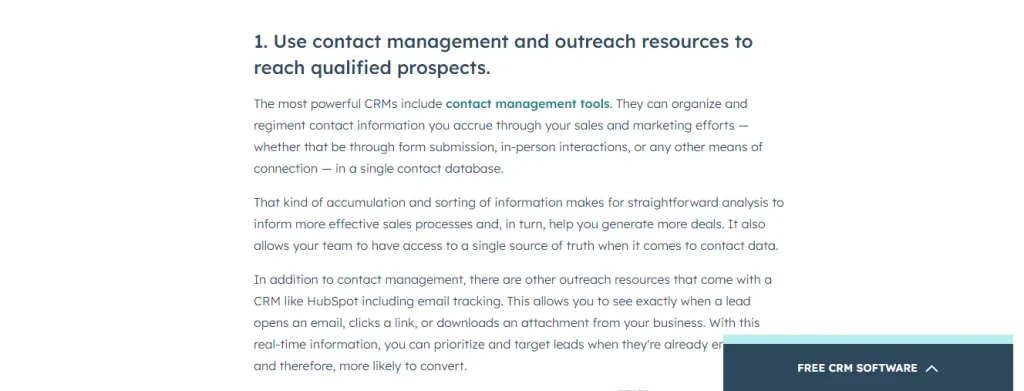
HubSpot has mastered the product-led content strategy.
While educating the reader about the best way to close more deals in a CRM, they have managed to demonstrate the benefits and features of their product without sounding sales-y. And this is the same for almost every piece of content they create. The best part? The product is woven into the content in a way that never seems unnatural or out of place.
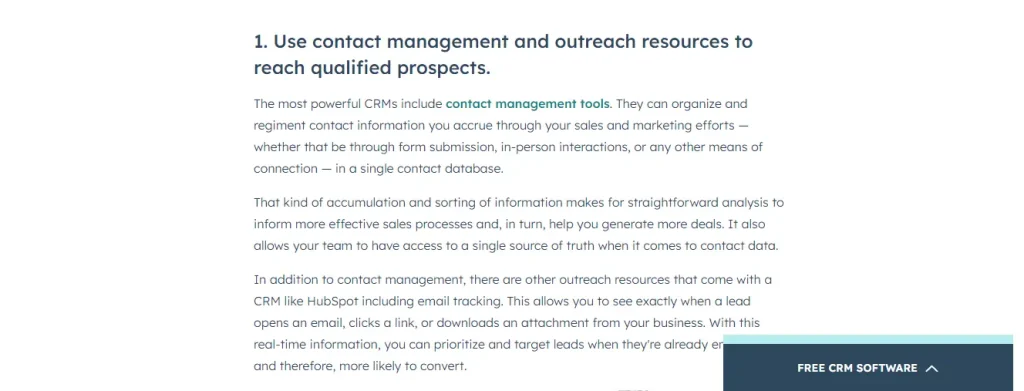
This is precisely what product-led content is all about. Creating product-led content is no rocket science, but it also comes down to your copywriting skills.
When creating SaaS content, determining where and when you should introduce your product should depend on which stage of the buyer’s journey you’re targeting. For certain topics, your product will be the hero. In contrast, there will be topics where you can only mention it superficially.
Once you know how to include your SaaS product in the content, it will also be easier to choose topics that allow you to do so, carrying higher search potential.
E. Use the Right Distribution Channels
With everything else taken care of, it’s time to focus on promoting and distributing your content using the right channels.
Along with your website, identify other relevant channels like social media, paid advertising, YouTube, and more where your product-led content can attract higher engagement.
In fact, you can leverage various communities and forums to distribute your content and find prospects who will be interested in your product.
Here is an excellent example of Ahrefs, a company that makes SEO tools, and the various distribution channels they use to market their product-led content.
At Ahrefs, they follow a simple content strategy of educating their prospects and customers on how to grow website traffic and solve pain points using their tools. And this is done through a variety of communication channels, including-
- Website Blogs
- Facebook Groups
- Paid advertising
But in all these channels, one thing is common – they are all led by product.
Parting Thoughts
If companies like HubSpot, Notion and Shopify are any indication, product-led content is the future of marketing. It will not only help you improve traffic but find qualified leads as well.
So, start with analysing your customers’ challenges and tick off how your product solves each of them. Identify topics where your product can shine and put your excellent copywriting skills to work. Or hire a competent content partner to get the job done.
The magic of product-led content will follow swiftly.

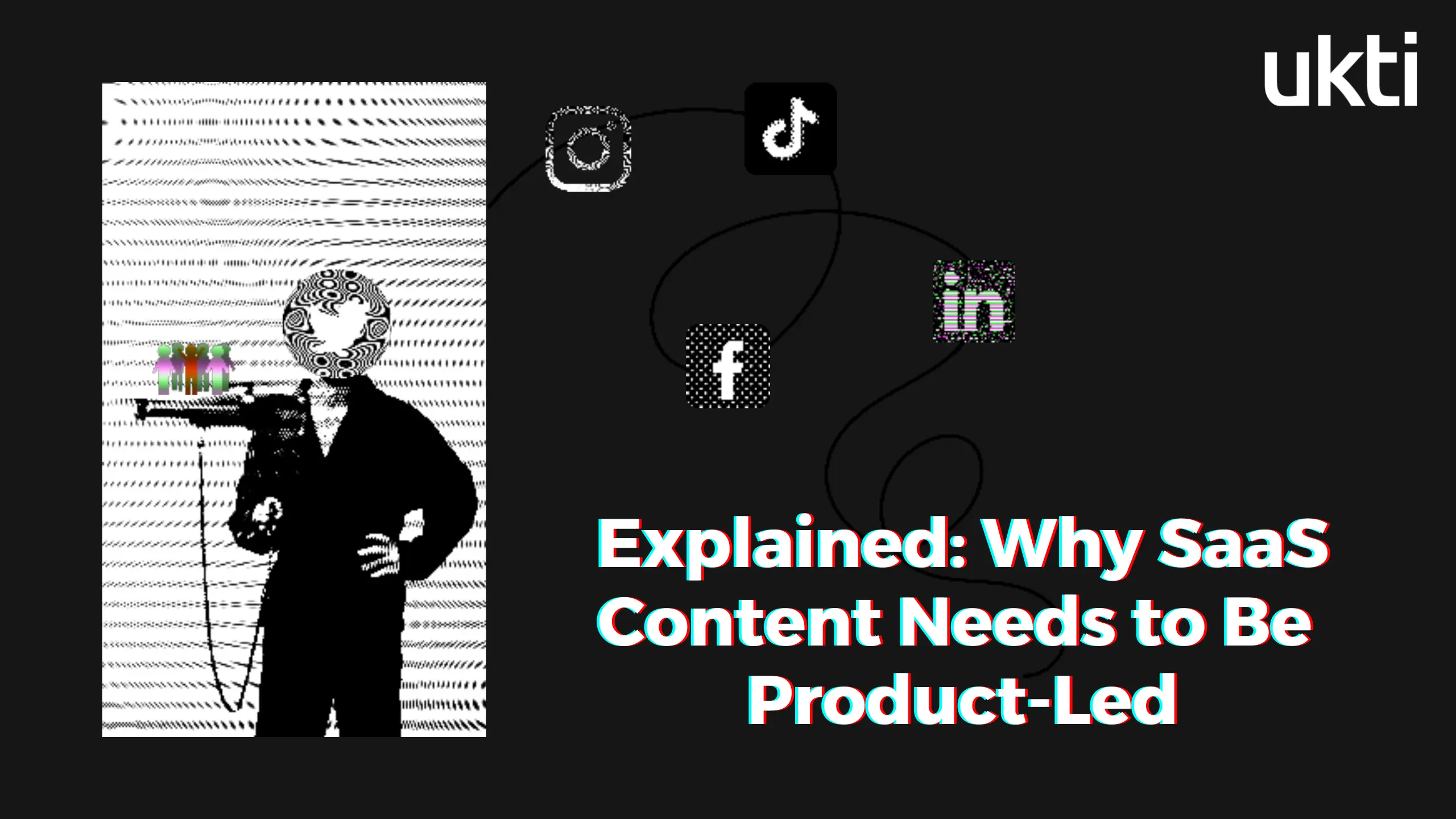
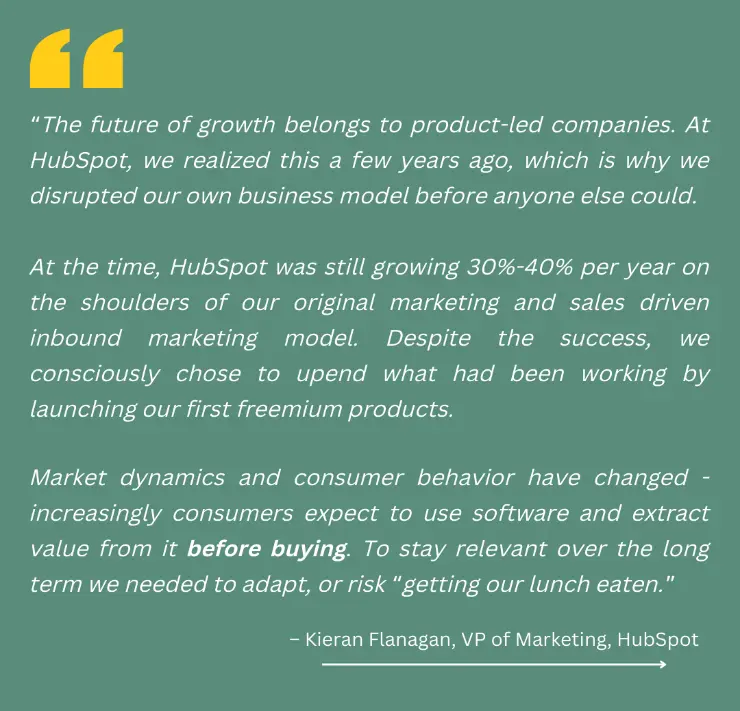
4 thoughts on “Why SaaS Content Needs to Be Product Led”